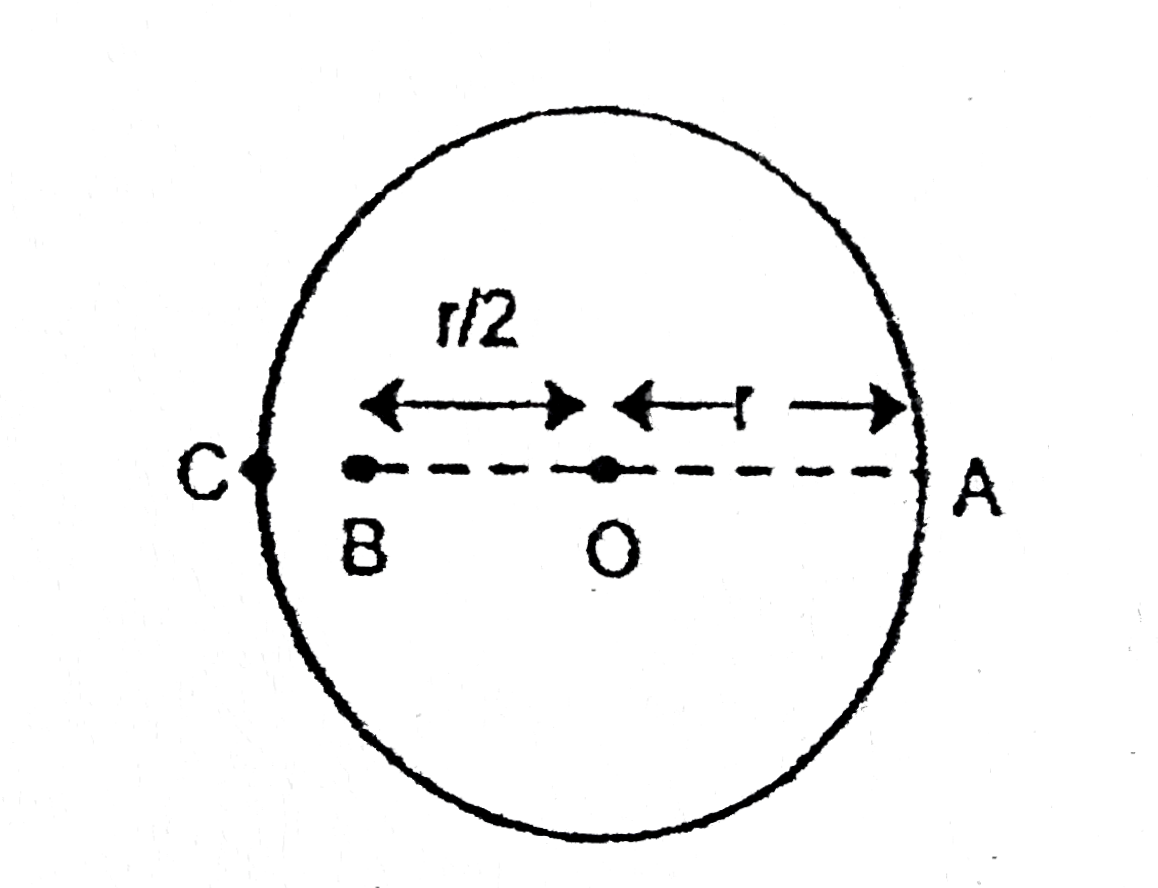A particle moving along a circule path of radius 'r' with uniform angular velocity ω. Its angular acceleration is
rω2
r/ω
zero
ω/r
The correct Answer is:C
To solve the question regarding the angular acceleration of a particle moving along a circular path with uniform angular velocity, we can follow these steps:
1. Understanding Angular Velocity:
- The problem states that the particle is moving with a uniform angular velocity, denoted as ω. This means that the angular displacement of the particle is changing at a constant rate over time.
2. Definition of Angular Acceleration:
- Angular acceleration (denoted as α) is defined as the rate of change of angular velocity with respect to time. Mathematically, it is expressed as:
\(
α = \frac{dω}{dt}
\)
- Here, dω represents the change in angular velocity, and dt represents the change in time.
3. Analyzing Uniform Angular Velocity:
- Since the angular velocity ω is uniform, it does not change over time. This implies that:
\(
\frac{dω}{dt} = 0
\)
- Therefore, the angular acceleration α is zero because there is no change in angular velocity.
4. Conclusion:
- Based on the analysis, we conclude that the angular acceleration of the particle is:
\(
α = 0
\)
Final Answer:
The angular acceleration of the particle is 0.
- The problem states that the particle is moving with a uniform angular velocity, denoted as ω. This means that the angular displacement of the particle is changing at a constant rate over time.
- Angular acceleration (denoted as α) is defined as the rate of change of angular velocity with respect to time. Mathematically, it is expressed as:
\(
α = \frac{dω}{dt}
\)
- Here, dω represents the change in angular velocity, and dt represents the change in time.
- Since the angular velocity ω is uniform, it does not change over time. This implies that:
\(
\frac{dω}{dt} = 0
\)
- Therefore, the angular acceleration α is zero because there is no change in angular velocity.
- Based on the analysis, we conclude that the angular acceleration of the particle is:
\(
α = 0
\)
The angular acceleration of the particle is 0.
Topper's Solved these Questions
Similar Questions
A particle is revolving in a circular path of radius 2 m with constant angular speed 4 rad/s. The angular acceleration of particle is
View SolutionA particle is moving along a circular path. The angular velocity, linear velocity, angular acceleration and centripetal acceleration of the particle at any instant are →ω,→v,→a,→ac respectively. Which of the following relations are correct ?
View Solution
Knowledge Check
- Question 1 - Select One
A particle is moving on a circular path of radius R with uniform angular speed ω. The magnitude of average velocityof particle during time t=0 to t=2π3ω:
A√32ωRπB32ωRπC3√32ωRπD23ωRπ - Question 2 - Select One
A ball of radius r is rolling (pure rolling) on a convex stationary circular surface of radius R with angular velocity ω and angular acceleration α. The magnitude of vertical acceleration of top point of the ball is
Aω2r(R+2rR+r)Bω2rCω2rR+rDω2rRR+r - Question 3 - Select One
A particle is moving in a circular orbit of radius r1 with an angular velocity ω1 It jumps to another circular orbit of radius r2 and attains an angular velocity ω2 . If r2=0.5r1 , and if no external torque is applied to the system, then the new angular velocity ω2 is given by
Aω2=ω1Bω2=2ω1Cω2=3ω1Dω2=4ω1
A particle is moving along a circular path. The angular velocity, linear velocity, angular acceleration, and centripetal acceleration of the particle at any instant respectively are →w,→v,→α,→ac. Which of the following relation is not correct ?
View SolutionA particle starts moving in a circular path of radius R with an initial speed v0 clockwise. If the angular acceleration is αrad/s2 anticlockwise, the time when the acceleration and the velocity vectors of the particle become parallel, is
View SolutionWhen a particle is recolving around a circular path with uniform angular velocity , then its acceleration is
View SolutionA particle is revolving in a circle of radius r and centre at 'O' with uniform angular velocity ω. Choose the correct option(s) :
 View Solution
View SolutionA particle is moving along a circular path. The angular velocity, linear velocity,. Angular acceleration, and centripetal acceleration of the particle at any instant. Respectively are →ω,→v,→∝,and→ac. Which of the following relations is not correct ?
View Solution
